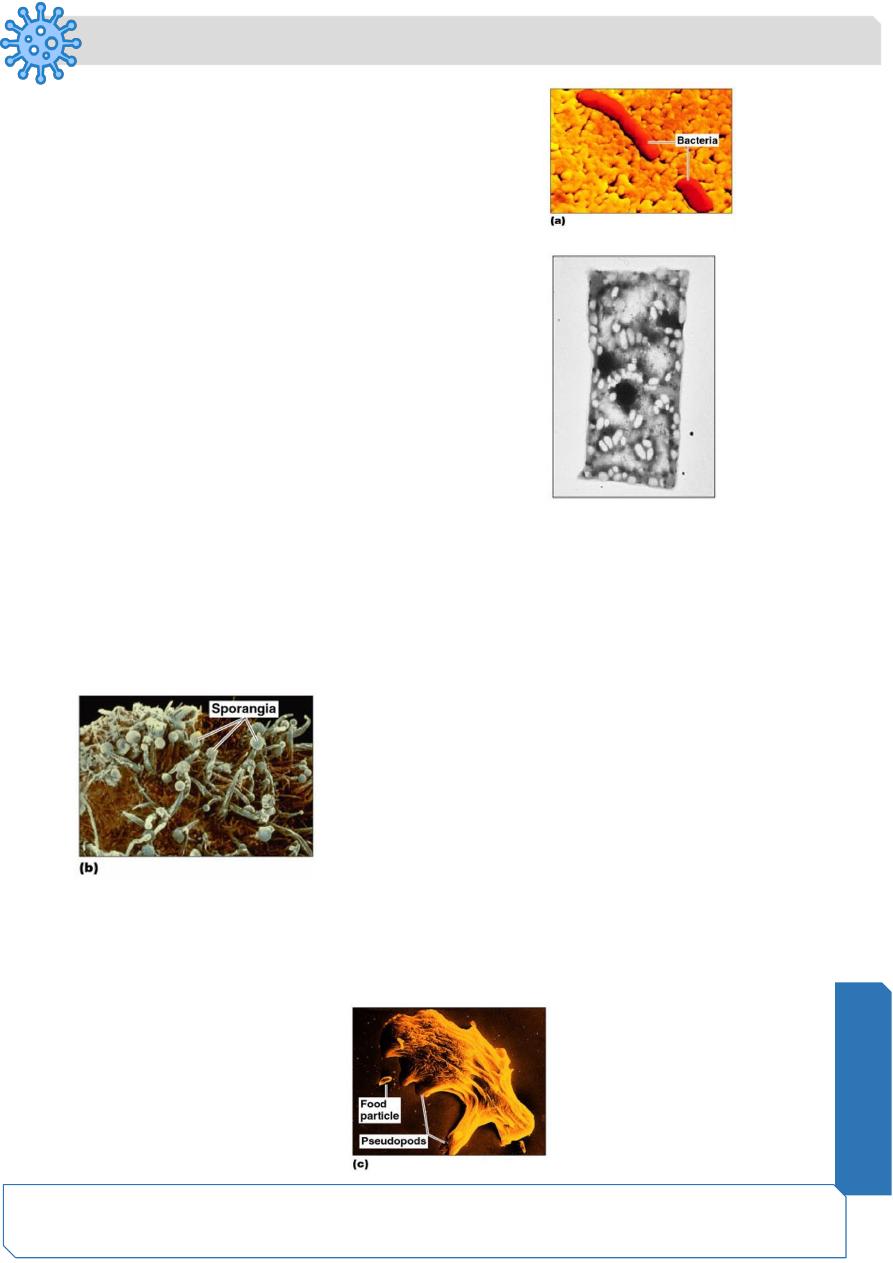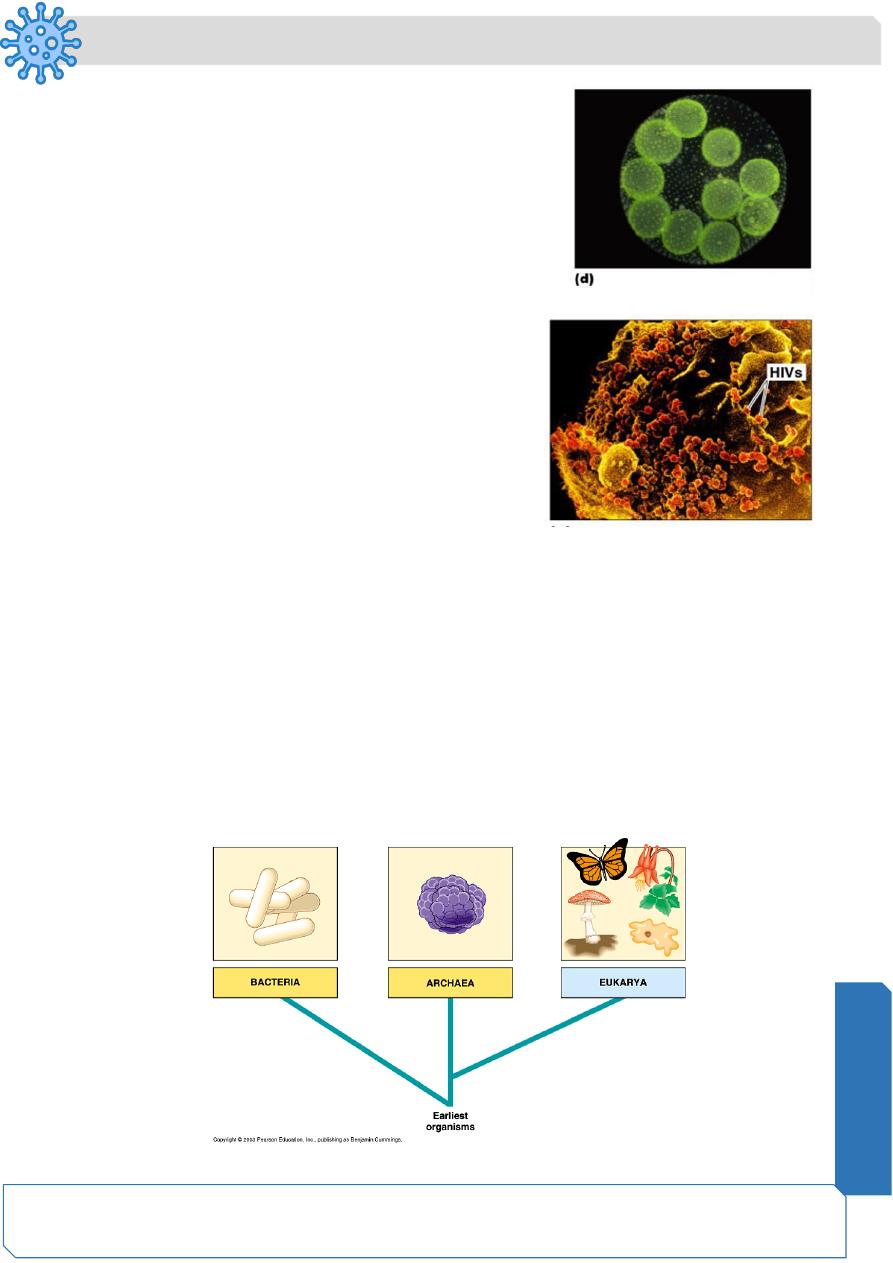
Microbiology
Notes…
1
Bacteriology Lecture.1
Introduction
Microbes in Our Lives
Microorganisms are organisms that are too small to be seen with the unaided eye.
“Germ” refers to a rapidly growing cell.
Microorganisms:
Good
Decompose organic waste
Produce industrial chemicals such as ethyl alcohol and acetone
Produce fermented foods such as vinegar, cheese, and bread
Bad
Pathenogenic
Naming and Classifying Microorganisms
Linnaeus established the system of scientific nomenclature.
Each organism has two names: the genus and specific species.
Scientific names
Are italicized or underlined. The genus is capitalized and the specific species is
lower case.
Are “Latinized” and used worldwide.
May be descriptive or honor a scientist.
Staphylococcus aureus
— Describes the clustered arrangement of the cells (staphylo-) and the golden
color of the colonies.
Escherichia coli
— Honors the discoverer, Theodor Eshcerich, and describes the bacterium’s
habitat, the large intestine or colon.
After the first use, scientific names may be abbreviated with the first letter of the
genus and the specific species:
—
Staphylococcus aureus
and
Esherichia coli
are found in the human body.
S.
aureus
is on skin and
E. coli
, in the large intestine.
Microorganisms:
N
ee
d S
om
e H
el
p?

Microbiology
Notes…
2
Bacteria
Prokaryotes
Peptidoglycan cell walls
Binary fission
For energy, use organic chemicals, inorganic
chemicals, or photosynthesis
Archaea:
Prokaryotic
Lack peptidoglycan
Live in extreme environments
Include:
— Methanogens
— Extreme halophiles
— Extreme thermophiles
Fungi
Eukaryotes
Chitin cell walls
Use organic chemicals for energy
Molds and mushrooms are multicellular consisting of masses of mycelia, which
are composed of filaments called hyphae
Yeasts are unicellular
Protozoa
Eukaryotes
Absorb or ingest organic chemicals
May be motile via pseudopods, cilia, or flagella

Microbiology
Notes…
3
Algae
Eukaryotes
Cellulose cell walls
Use photosynthesis for energy
Produce molecular oxygen and organic
compounds
Viruses
Acellular
Consist of DNA
or
RNA core
Core is surrounded by a protein coat
Coat may be enclosed in a lipid envelope
Viruses are replicated only when they are in a
living host cell
Taxonomy
— The science of classifying organisms
— Provides universal names for organisms
— Provides a reference for identifying organisms
Classification of Microorganisms
Three domains
— Bacteria
— Archaea
— Eukarya
Protists
Fungi
Plants
Animals

Microbiology
Notes…
4
Prokaryotes
Bacteria (or Eubacteria)
Most abundant on earth
They are nitrogen fixers and recycle carbon
No membrane bound organelles
Archaea
Methanogens
Halophiles
Hyperthermophiles
Major Taxonomic Groups of Bacteria per
Bergey’s manual
Gracilicutes – gram-negative cell walls, thin-skinned
Firmicutes – gram-positive cell walls, thick skinned
Tenericutes – lack a cell wall & are soft
Mendosicutes – archaea, primitive procaryotes with unusual cell walls &
nutritional habits
Domain Eukarya
Animalia: Multicellular; no cell walls; chemoheterotrophic
Plantae: Multicellular; cellulose cell walls; usually photoautotrophic
Fungi: Chemoheterotrophic; unicellular or multicellular; cell walls of chitin;
develop from spores or hyphal fragments
Protista: for eukaryotic organisms that do not fit other kingdoms
Identification Methods
Morphological characteristics: Useful for identifying
Differential staining: Gram staining, acid-fast staining
Biochemical tests: Determines presence of bacterial enzymes

Microbiology
Notes…
5
Serology
Combine known antiserum + unknown bacterium
Slide agglutination
ELISA
Western blot
Branches of Microbiology
Bacteriology is the study of bacteria.
Mycology is the study of fungi.
Parasitology is the study of protozoa and parasitic worms.

Microbiology
Notes…
6
Immunology is the study of immunity. Vaccines and interferons are being
investigated to prevent and cure viral diseases.
The use of immunology to identify some bacteria according to serotypes (variants
within a species) was proposed by Rebecca Lancefield in 1933.
Virology is the study of viruses.
Recombinant DNA technology or genetic engineering involves microbial genetics
and molecular biology.
